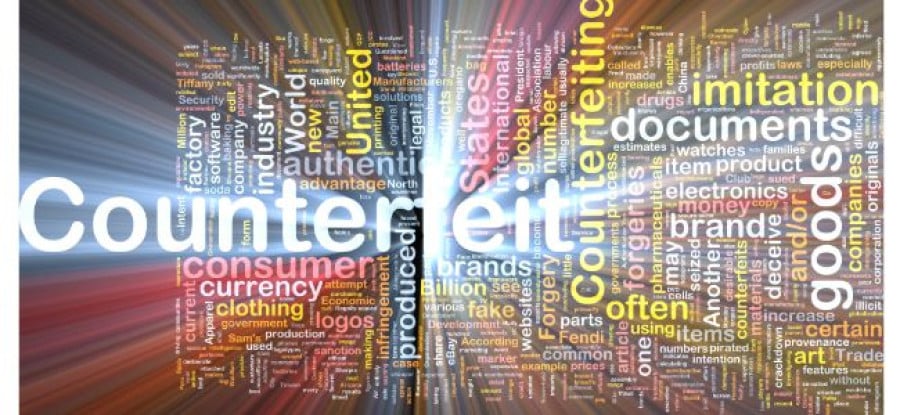How to deal with counterfeits in China

This article explores the extent of the counterfeiting problem and the measures that Rights Holders can take to counteract the economic and social impact of counterfeiting with a particular emphasis on goods originating from China. It follows a feature piece (availble here) that gives a broader overview to the threats faced by Intellectual Property Rights (IPRs) Holders within the Sports industry from counterfeit goods and piracy.
In many respects finding an effective way to deal with counterfeits in China is the same as finding an effective way to deal with counterfeits full stop. Of course given the sheer volume of counterfeits originating from China it follows that an effective strategy in China will filter down and enhance a brand enforcement programme across the board.
For the purpose of this article it would be worth noting that even within the world of counterfeiting it could be said that there are different tiers of counterfeit goods and these are identified below;
- Direct Counterfeits. These are fake goods that are intended to be sold as identical products to the genuine article so that they are packaged in an identical manner, use the genuine trade marks and descriptions that one would expect on the real items they purport to be.
- Lookalikes. These products will replicate the feel and get-up of genuine products so as to lead consumers to believe they are the real deal even though the products will not be identical.
- Piggy-backing Products. These are products which deliberately misuse trade marks on different products and which in trade mark terms would fall foul of similar marks dissimilar goods. Generally in this instance the reputation of the genuine mark is used to sell different products from those that the brand owner would usually sell.
If brand owners are serious about protecting their brands then any cohesive strategy to disrupt the flow of counterfeits and maintain the integrity of the brand must target all 3 types of counterfeits identified above - with the usual caveats that any action should naturally be cost-effective and targeted. While it can be debated whether anyone truly believes that Cobra golf clubs can be bought new for £100 or that Apple make shoes, or that anyone would genuinely confuse a pair of Mikes running shoes with Nikes,1 Direct Counterfeits, Lookalikes and Piggy Backing Products are all damaging to a brands reputation, and all interfere with the economic rights of the brand owner.
For any brand looking to enforce its rights, the golden thread of brand enforcement must be to make sure you have rights to rely on. Trade marks are jurisdictional and they are classified by categories of goods (Nice Classification System).2 A Registration for clothing products is not going to mean your trade mark is also protected for cosmetic or perfume products. This is as true of the names of famous individuals as it is for well-known brands. If the plan is to diversify and introduce new products under a particular brand the trade mark portfolio needs to represent the intent and therefore it becomes important to register trade marks for the relevant products of interest for example “sporting equipment” in the countries of interest including points of sale, manufacture and where products are shipped and stored. Very few brands truly have such an immensely popular and inescapable reputation such that they can rely on fame of mark to assist them in protecting and enforcing their brand rights. Essentially, the jurisdictional nature of trade marks and the “first-to-file” regime commonly adopted at trade mark Registries means if you want to protect your rights, register them at customs to police border measures and rely on them in court proceedings they need to be registered on the Trade Mark Register first. There is also a need to maintain the validity of marks that can become vulnerable to attack via revocation procedures for non-use so getting a trade mark on the Register is merely the first step in an on-going effort to establish rights to protect a brand.
To continue reading or watching login or register here
Already a member? Sign in
Get access to all of the expert analysis and commentary at LawInSport including articles, webinars, conference videos and podcast transcripts. Find out more here.
- Tags: China | Counterfeiting | European Observatory | European Union | General Administration of Customs China | Governance | Intellectual Property | Office for Harmonization in the Internal Market (OHIM) | Regulation | Trade Mark | United Kingdom (UK) | United Nations (UN) | United States of America (USA) | World Health Organization (WHO) | World Intellectual Property Organization (WIPO)
Related Articles
- My insights from working as a sports and media lawyer in Asia
- Protecting athletes’ data: an examination of database rights in the UK and EU
- A guide to key legal issues for sponsors and right-holders operating in the UAE
- One of the world’s most lucrative industries – the trade in counterfeit sport goods
Written by
Sean Corbett
Sean is an IP practitioner and trade mark attorney with a unique insight into, and focus on, brand protection issues. After 14 action-fueled years at Formula One Management Ltd where he was Brand Protection Manager Sean has set up on his own as a Brand Protection Consultant offering a unique one-stop resource for every conceivable brand protection challenge to help protect, develop and strengthen the IP rights that are crucial to commercial success.

 Global Summit 2024
Global Summit 2024